Toyota RAV4 vs Land Rover Defender – Differences & prices compared
Two cars, one duel: Toyota RAV4 meets Land Rover Defender.
Which one wins in performance, efficiency and value for money? Find out now!
Costs and Efficiency:
When it comes to price and running costs, the biggest differences usually appear. This is often where you see which car fits your budget better in the long run.
Toyota RAV4 has a significantly advantage in terms of price – it starts at 35100 £, while the Land Rover Defender costs 57900 £. That’s a price difference of around 22723 £.
Fuel consumption also shows a difference: Toyota RAV4 manages with 1 L and is therefore decisively more efficient than the Land Rover Defender with 6 L. The difference is about 5 L per 100 km.
As for range, the Toyota RAV4 performs clearly perceptible better – achieving up to 75 km, about 27 km more than the Land Rover Defender.
Engine and Performance:
Power, torque and acceleration say a lot about how a car feels on the road. This is where you see which model delivers more driving dynamics.
When it comes to engine power, the Land Rover Defender has a decisively edge – offering 635 HP compared to 306 HP. That’s roughly 329 HP more horsepower.
In acceleration from 0 to 100 km/h, the Land Rover Defender is significantly quicker – completing the sprint in 4 s, while the Toyota RAV4 takes 6 s. That’s about 2 s faster.
In terms of top speed, the Land Rover Defender performs noticeable better – reaching 250 km/h, while the Toyota RAV4 tops out at 180 km/h. The difference is around 70 km/h.
Space and Everyday Use:
Beyond pure performance, interior space and usability matter most in daily life. This is where you see which car is more practical and versatile.
Seats: Land Rover Defender offers distinct more seating capacity – 8 vs 5.
In curb weight, Toyota RAV4 is clearly perceptible lighter – 1745 kg compared to 2300 kg. The difference is around 555 kg.
In terms of boot space, the Land Rover Defender offers clearly perceptible more room – 786 L compared to 580 L. That’s a difference of about 206 L.
In maximum load capacity, the Land Rover Defender performs slightly better – up to 2078 L, which is about 388 L more than the Toyota RAV4.
When it comes to payload, Land Rover Defender noticeable takes the win – 819 kg compared to 600 kg. That’s a difference of about 219 kg.
Who comes out on top?
Overall, the Toyota RAV4 shows itself to be dominates this comparison and secures the title of DriveDuel Champion.
It convinces with the more balanced overall package and proves to be the more versatile choice for everyday use.
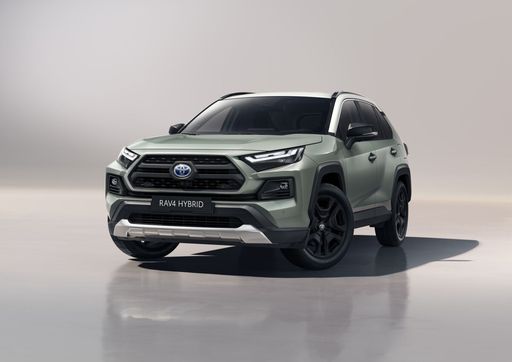
Toyota RAV4
Toyota RAV4
The Toyota RAV4 stands out in the crowded SUV market with its distinct design, embodying a blend of robustness and style. Its cabin provides a harmonious fusion of comfort and practicality, offering plenty of space for both passengers and luggage. This vehicle is engineered to deliver a smooth driving experience, whether manoeuvring through city streets or exploring winding country roads.
details @ Toyota
@ Toyota
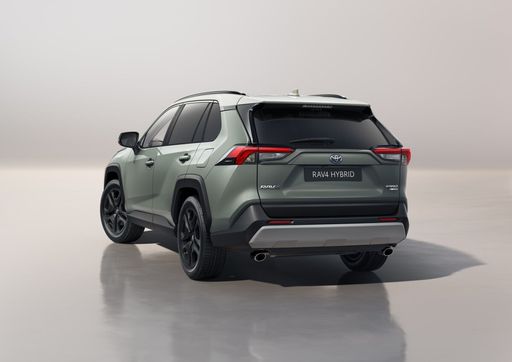 @ Toyota
@ Toyota
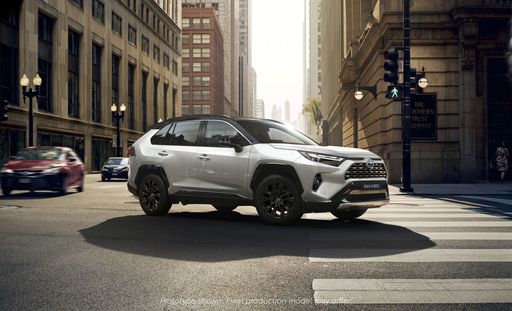 @ Toyota
@ Toyota
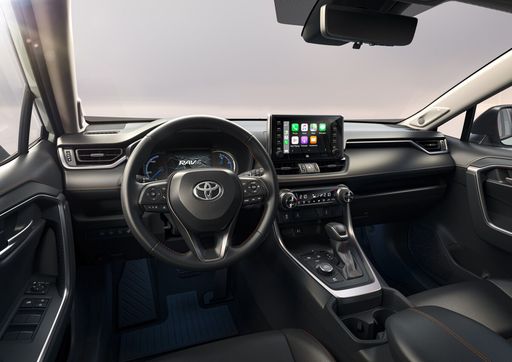 @ Toyota
@ Toyota
Land Rover Defender
The Land Rover Defender boasts a rugged design that seamlessly blends traditional aesthetics with modern innovation, making it a true icon in the world of off-road vehicles. Its performance capabilities are matched by a luxurious interior, offering comfort and cutting-edge technology for drivers and passengers alike. Whether tackling rough terrains or cruising through city streets, the Defender exudes versatility and reliability, maintaining its reputation as a robust yet refined companion for any adventure.
details @ media.landrover.com
@ media.landrover.com
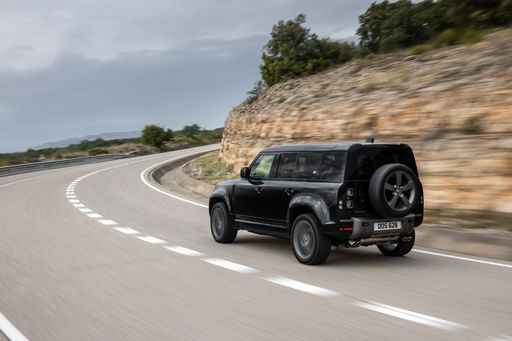 @ media.landrover.com
@ media.landrover.com
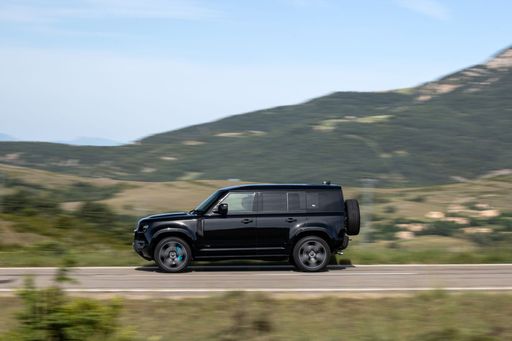 @ media.landrover.com
@ media.landrover.com
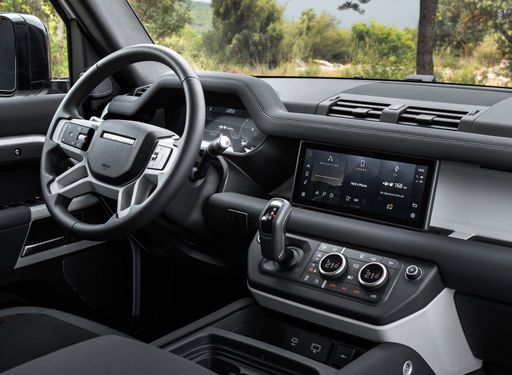 @ media.landrover.com
@ media.landrover.com
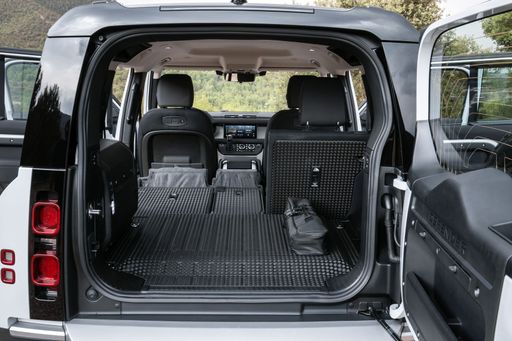 @ media.landrover.com
@ media.landrover.com
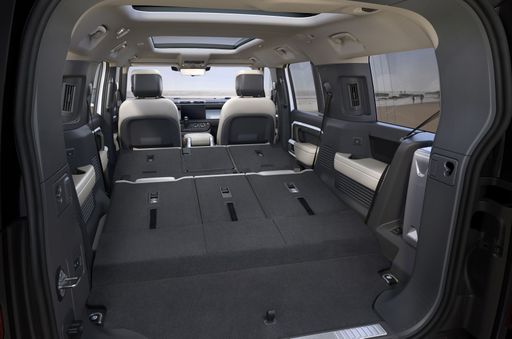 @ media.landrover.com
@ media.landrover.com

|

|
|
|
|
Costs and Consumption |
|
|---|---|
|
Price
35100 - 55700 £
|
Price
57900 - 172000 £
|
|
Consumption L/100km
1 - 5.6 L
|
Consumption L/100km
6 - 14.4 L
|
|
Consumption kWh/100km
-
|
Consumption kWh/100km
-
|
|
Electric Range
75 km
|
Electric Range
48 km
|
|
Battery Capacity
-
|
Battery Capacity
15.40 kWh
|
|
co2
22 - 128 g/km
|
co2
135 - 324 g/km
|
|
Fuel tank capacity
55 L
|
Fuel tank capacity
89 - 91 L
|
Dimensions and Body |
|
|---|---|
|
Body Type
SUV
|
Body Type
Off-Roader
|
|
Seats
5
|
Seats
2 - 8
|
|
Doors
5
|
Doors
3 - 5
|
|
Curb weight
1745 - 1910 kg
|
Curb weight
2300 - 2745 kg
|
|
Trunk capacity
520 - 580 L
|
Trunk capacity
293 - 786 L
|
|
Length
4600 mm
|
Length
4323 - 5358 mm
|
|
Width
1855 mm
|
Width
2008 mm
|
|
Height
1685 mm
|
Height
1967 - 1995 mm
|
|
Max trunk capacity
1604 - 1690 L
|
Max trunk capacity
1263 - 2078 L
|
|
Payload
390 - 600 kg
|
Payload
494 - 819 kg
|
Engine and Performance |
|
|---|---|
|
Engine Type
Full Hybrid, Plugin Hybrid
|
Engine Type
Petrol, Diesel MHEV, Plugin Hybrid, Petrol MHEV
|
|
Transmission
Automatic
|
Transmission
Automatic
|
|
Transmission Detail
CVT
|
Transmission Detail
Automatic Gearbox
|
|
Drive Type
Front-Wheel Drive, All-Wheel Drive
|
Drive Type
All-Wheel Drive
|
|
Power HP
218 - 306 HP
|
Power HP
200 - 635 HP
|
|
Acceleration 0-100km/h
6 - 8.4 s
|
Acceleration 0-100km/h
4 - 10.2 s
|
|
Max Speed
180 km/h
|
Max Speed
175 - 250 km/h
|
|
Torque
-
|
Torque
500 - 750 Nm
|
|
Number of Cylinders
4
|
Number of Cylinders
4 - 8
|
|
Power kW
160 - 225 kW
|
Power kW
147 - 467 kW
|
|
Engine capacity
2487 cm3
|
Engine capacity
1997 - 5000 cm3
|
General |
|
|---|---|
|
Model Year
2024 - 2025
|
Model Year
2025
|
|
CO2 Efficiency Class
D, B
|
CO2 Efficiency Class
G, D
|
|
Brand
Toyota
|
Brand
Land Rover
|
What drive types are available for the Toyota RAV4?
Available configurations include Front-Wheel Drive or All-Wheel Drive.
The prices and data displayed are estimates based on German list prices and may vary by country. This information is not legally binding.
